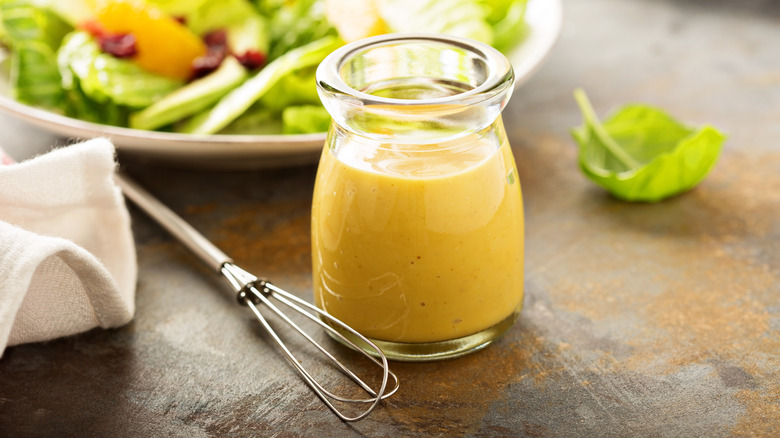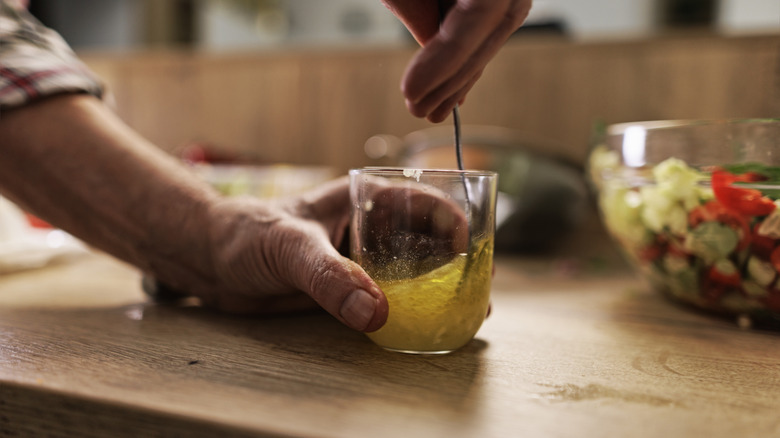Always Follow This Ratio Rule When Making Homemade Vinaigrette
While store-bought salad dressings line supermarket shelves, making homemade vinaigrette is an easy process that requires just a few ingredients (and it's not just for salads!). In order to get taste and texture right, however, you must always follow an easy-to-remember ratio rule. And according to Kate, food blogger and creator of CookingLikeKate, the 3:1 ratio — three parts oil to one part vinegar — is ideal for a reason.
"Three parts oil temper the bite of the vinegar without losing that bright, snappy quality you desire in a salad dressing," she explained to Food Republic. She went on to describe two of the biggest vinaigrette disasters: either it was so sour and acidic it made your mouth pucker, or it had an unpalatable unctuousness, telling us that those were "likely out of balance." The 3:1 ratio, on the other hand, creates a smooth, silky texture thanks to the oil and acid being in proper proportion. This ratio "will allow the dressing to stick to your greens just so, enhancing them, instead of making your salad soggy."
How to choose oils and vinegars for your vinaigrette
Before you head to your local specialty grocery store for expensive oils and vinegars, if you're a beginner on the homemade vinaigrette front, you might want to temper your culinary enthusiasm and experiment first with more readily available ingredients. "For vinegar, I always recommend starting with red wine vinegar or apple cider vinegar," Kate suggested (though there are plenty of simple red wine vinegar substitutes you can use in a pinch). She informed us that they both have a crisp bite without overtaking your entire palate, and their flavors partner nicely with greens and vegetables. "Red wine vinegar is slightly bolder, but apple cider vinegar is lighter and a bit fruity," she explained.
As far as oils go, Kate recommended opting for extra virgin olive oil, something with a lighter taste, or using avocado oil (just look out for red flags while buying it, like a yellowish to clear color or rancid/unpleasant smell). She cautioned against using anything "too bitter or too strong, as it will overpower your dressing." An oil with a neutral flavor allows itself to be whisked to a nice creaminess, while not overwhelming the bite of the vinegar or its taste, nor the flavor of the spices and other ingredients, she advised. Ultimately, Kate had a simple recipe you can try and follow today: "If you're a novice at making your own, try starting with red wine vinegar mixed with olive oil, a bit of Dijon mustard, and a pinch of salt." It's simple, but so tasty.


